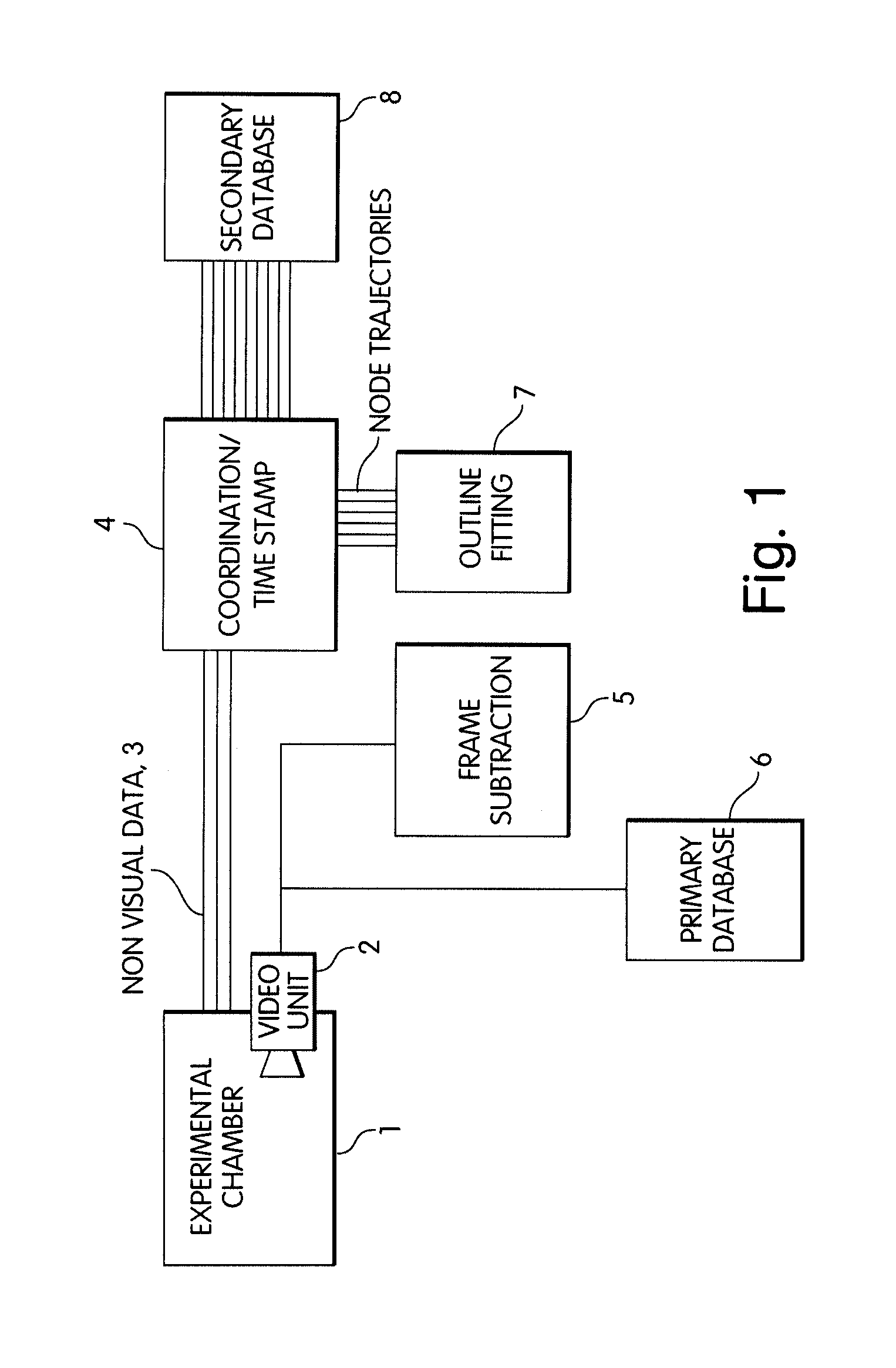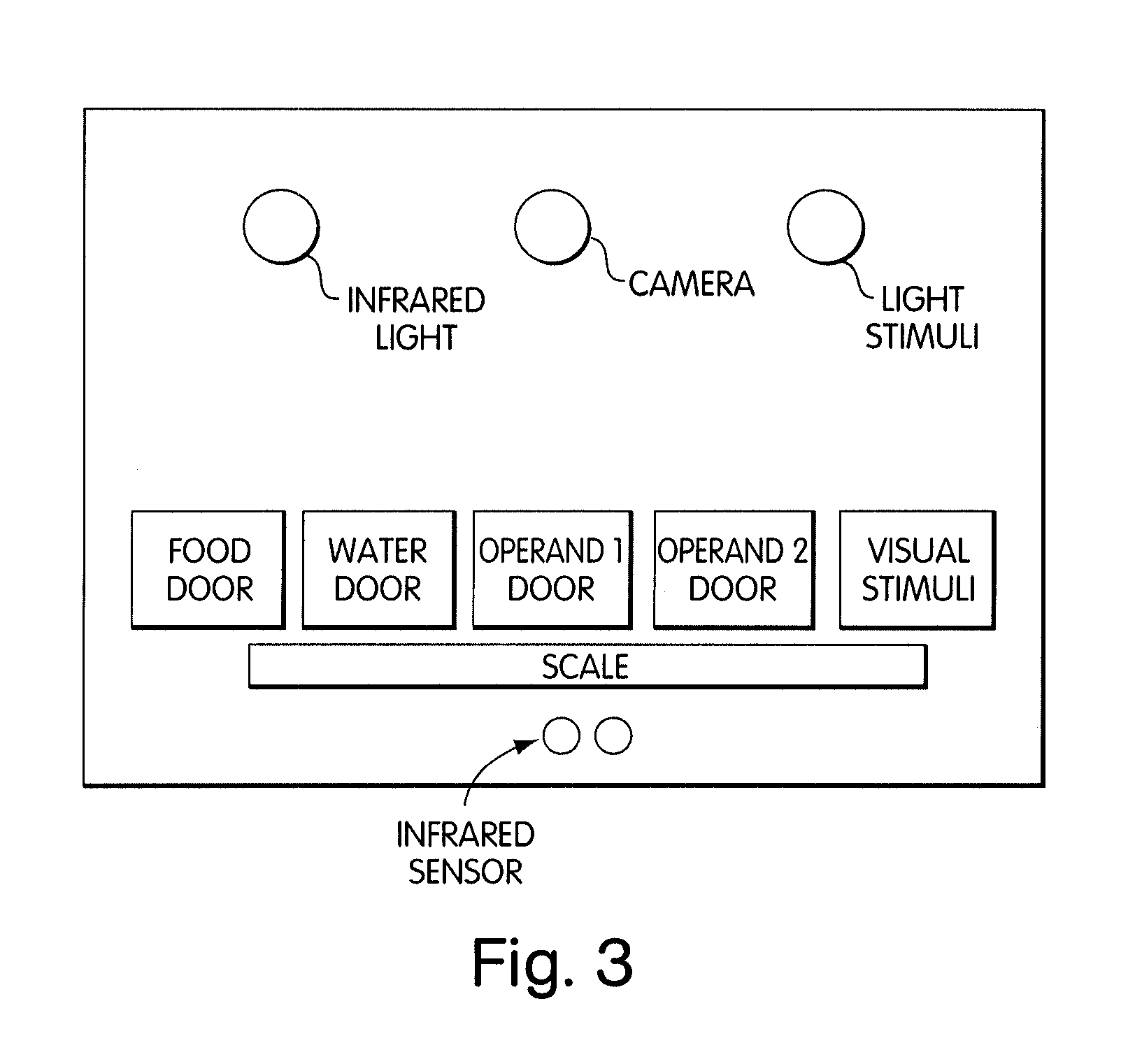Systems and methods for monitoring behavior informatics
a behavior informatics and system technology, applied in healthcare informatics, data processing applications, instruments, etc., can solve problems such as abnormal sensory function, confound or obliterate targeted gene function, and lack of progress in understanding neuropsychiatric disorders, so as to accelerate lead selection and drug development, increase statistical power and ability, and reduce costs
- Summary
- Abstract
- Description
- Claims
- Application Information
AI Technical Summary
Benefits of technology
Problems solved by technology
Method used
Image
Examples
Embodiment Construction
: Analysis
[0214] The output of the subject system can be visualized as a stream of numbers (also called "time series") representing the parameters that result from the computer vision algorithm, and those that arise from the other measuring devices implemented in the subject system (e.g., cages).
[0215] Figure 11A shows an exemplary combination of data streaming from an animal in an embodiment of the subject system. For each window (in this case shown to coincide with the ECG sliding window) a given set of states and parameters is obtained from each mouse. These dynamically changing "frames" of behavior present different types of complexity. First, they change over time in what is normally called the "time course" of behavior (e.g., rearing may be very frequent initially but decline significantly towards the end of the session). Second, each frame has some dependency on the previous one (e.g., an animal cannot step down if it has not stepped up first), and this is called the "tempora...
PUM
| Property | Measurement | Unit |
|---|---|---|
| area | aaaaa | aaaaa |
| stress | aaaaa | aaaaa |
| time | aaaaa | aaaaa |
Abstract
Description
Claims
Application Information
 Login to View More
Login to View More - R&D
- Intellectual Property
- Life Sciences
- Materials
- Tech Scout
- Unparalleled Data Quality
- Higher Quality Content
- 60% Fewer Hallucinations
Browse by: Latest US Patents, China's latest patents, Technical Efficacy Thesaurus, Application Domain, Technology Topic, Popular Technical Reports.
© 2025 PatSnap. All rights reserved.Legal|Privacy policy|Modern Slavery Act Transparency Statement|Sitemap|About US| Contact US: help@patsnap.com



